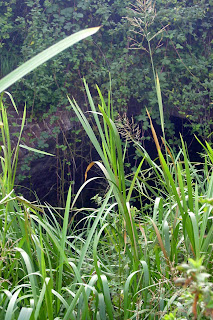Neath and Tennant Canal
13th December 2009
Of the Neath and Tennant Canal's three aqueducts, the Aberbulais is the only one which stands in it's unreconstructed form.
A collection of photos and historical comment about the UK's aqueducts, the underappreciated heroes of the inland waterways system.








Not content with the northerly aqueduct we also took a walk past the more southerly stream, an unnamed but more substantial watercourse. This stream is accommodated by a substantial brick arch, similar in proportions to a typical canal bridge and probably created around the same former. The growth of seasonal vegetation prevented a descent photograph, with its outline more apparent to the naked eye. I will try and get a better shot of this structure during the winter months.








The in house canal network operated until the 1940's when a last, and very utilitarian aqueduct was built to link up to a new mixing house. Newer is not always better and this structure, a simple concrete channel sat atop a row of concrete pipes has long since vanished.
26, hmm. Thats quite a big number. I wonder where all the rest are? More hunting needed.
The photos are courtesy of www.londoncanals.co.uk